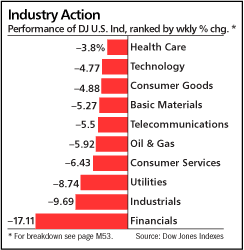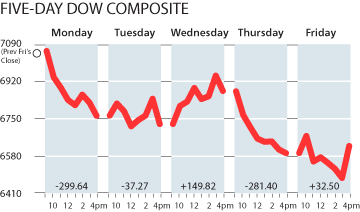Savings have new, temporary protections
Sunday, October 12, 2008 3:37 AM
By Michelle Singletary
Everywhere I go, I can feel the tension. People are naturally concerned about their investment portfolios, but increasingly they're worried about the safety of their cash.
With a number of major bank failures and takeovers, many people are wondering how much of their cash is protected.
On Oct. 3, President Bush signed the Emergency Economic Stabilization Act of 2008. It raised the amount of money in bank and savings accounts that the Federal Deposit Insurance Corp. covers from $100,000 to $250,000 per depositor.
However, here's why you have to pay attention to all the fine details of the plans to "protect" our cash. The increase in the FDIC coverage is only temporary. The basic FDIC deposit insurance limit will return to $100,000 after Dec. 31, 2009. The legislation did not increase coverage for retirement accounts, which continues to be $250,000.
The new law also temporarily increased the insurance limit to $250,000 on accounts in federal credit unions and the majority of state-chartered credit unions.
Federal credit unions are regulated by the National Credit Union Administration, an independent federal agency. It operates and manages the National Credit Union Share Insurance Fund, which insures the deposits of nearly 89 million accounts in all federal credit unions and the overwhelming majority of state-chartered credit unions.
In nine states, 163 state-chartered credit unions offer coverage from American Share Insurance, a private insurance company. The company insures up to $250,000 per account. If you have an account at a credit union with this insurance, it is not guaranteed by the federal government. However, Dennis R. Adams, president and chief executive of ASI, says depositors with its coverage should not be worried about their accounts. "We have a good track record and good financial statements," Adams said. "Credit unions are not the source of the problems today."
Before the FDIC limits were raised, the Treasury Department announced it would provide protection for cash stashed in money-market mutual funds, which are offered by mutual-fund companies. These funds are not the same as money-market accounts offered by banks, which are FDIC-insured.
The federal government says it will guarantee that investors receive $1 for each money-market fund share held as of the close of business on Sept. 19. The program covers only money-market funds that are regulated under Rule 2a-7 of the Investment Company Act of 1940, are publicly offered, are registered with the Securities and Exchange Commission, and maintain a stable share price of $1. Taxable and nontaxable funds are covered.
The guarantee will be triggered if a participating fund's net asset value falls below $0.995, commonly referred to as "breaking the buck."
But the program will exist initially for three months; the Treasury secretary can extend the program up to the close of business on Sept. 18, 2009.
With all these temporary government solutions, the word for the day is diversify.
Michelle Singletary writes for the Washington Post Writers Group.
Subscribe to:
Post Comments (Atom)



No comments:
Post a Comment